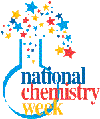The Ozone Hole: Electronic Resources
This is a collection of electronic resources (websites, software, etc.) covering the Ozone Hole. A separate collection of Print Resources is also available.
Key: E = Elementary (K–5), I = Intermediate (6–8), HS = High School (9–12), C = College, G = General Public
Starting Points
- The Ozone Hole Tour (HS, C)
- URL: http://www.atm.ch.cam.ac.uk/tour/
- The Ozone Depletion Phenomenon (G)
- URL: http://www.beyonddiscovery.org/content/view.article.asp?a=73
- Faces in the Environment (HS, C, G)
- URL: http://www.chemheritage.org/EducationalServices/faces/facehome.htm
- Science of Ozone Depletion (G)
- URL: http://www.epa.gov/ozone/science/index.html
- Encyclopedia of the Atmospheric Environment. from Manchester Metropolitan University. (HS, C, G)
- This encyclopedia is a one-stop source of information on a range of atmospheric issues, including air quality, acid rain, global warming and ozone depletion.
- Faces in the Environment. from The Chemical Heritage Foundation. (HS, C, G)
- Part of the Faces in Molecular Sciences series, the goal of this series is to teach chemistry by exploring the lives and work of real scientists. This module explores environmental chemistry, with special emphasis on the issue of ozone depletion by profiling three scientists involved in studying and dealing with ozone.
- Jet Propulsion Laboratory (JPL). from U.S. National Aeronautics and Space Administration. (E, I, HS, C)
- Managed by the California Institute of Technology, JPL is NASA’s lead center for robotic exploration of the solar system. JPL cameras and sensors are aboard satellites circling Earth to study the ozone, oceans and other Earth sciences. The section on the Earth contains images, multimedia, and missions plus information about air & ozone, solid Earth, oceans, natural hazards, and weather & climate. Younger viewers should check out the Kids section.
- Microwave Limb Sounder (MLS). from U.S. National Aeronautics and Space Administration. (HS, C)
- The Microwave Limb Sounder (MLS) experiments measure naturally-occurring microwave thermal emission from the limb of Earth’s atmosphere to remotely sense vertical profiles of selected atmospheric gases, temperature and pressure. The first MLS experiment in space is on NASA’s Upper Atmosphere Research Satellite (UARS) with its major objective to improve understanding of stratospheric ozone, especially ozone depletion due to chlorine chemistry.
- The Ozone Hole Tour. from The University of Cambridge. (HS, C)
- The Ozone Hole Tour was originally created to illustrate some of the research work that the University of Cambridge does on ozone depletion. However, an increasing number of students from schools and colleges come to the Ozone Hole Tour as part of assignments or homework, where the student is looking for information about the ozone hole. Some of these students email queries to us that we do our best to answer. As a result of this and in light of the comments received on the earlier version of the tour, we have revised the content and hopefully made it better suited to students’ needs.
- United Nations Environment Programme: UNEP Activities in Atmosphere. (HS, C, G)
- List of links to websites of various UN programs dealing with environmental issues.
Copyright © 2003 American Chemical Society

